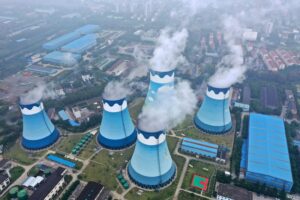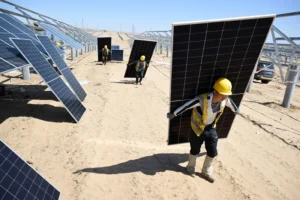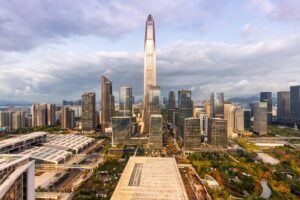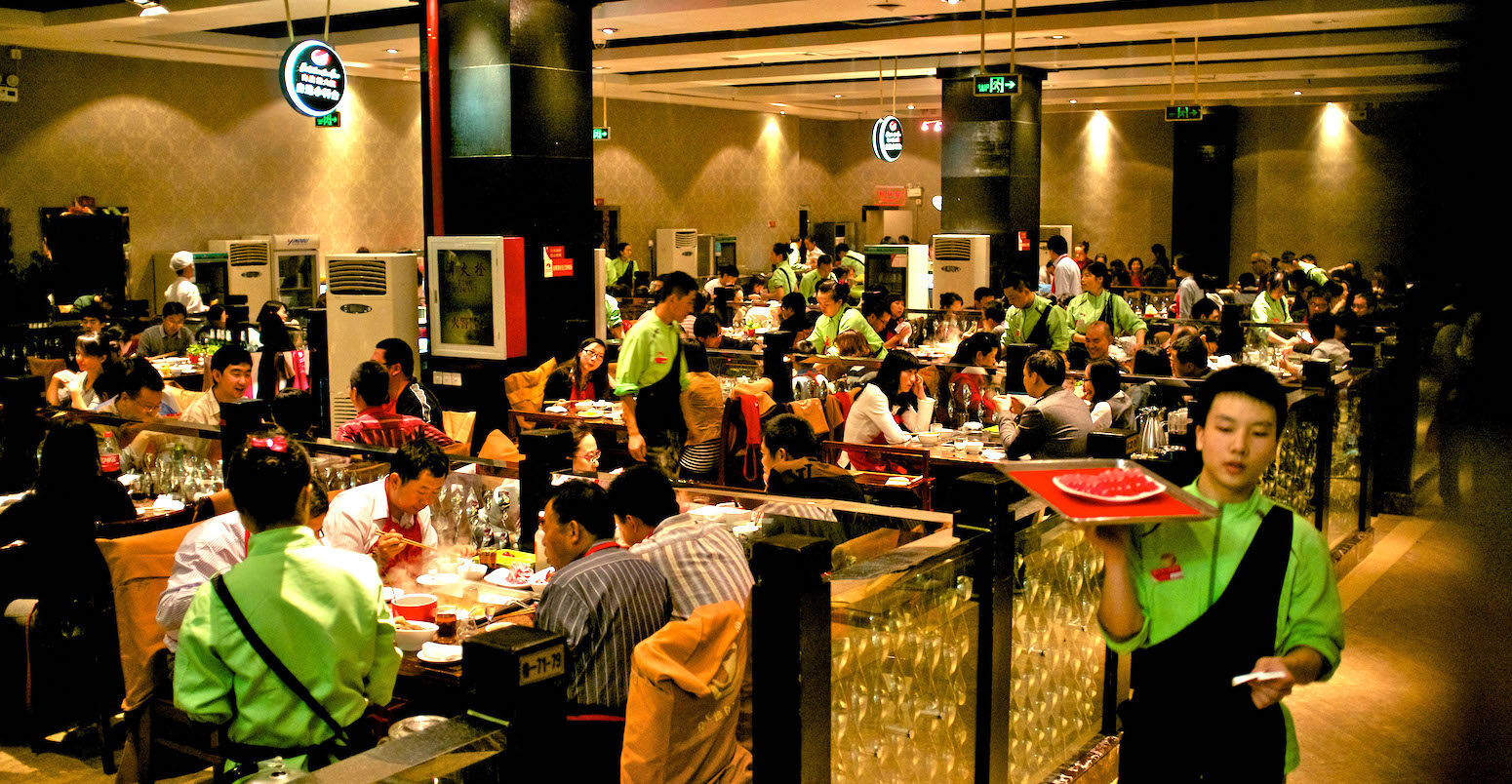
China: What the world’s largest food system means for climate change
Multiple Authors
02.20.23Multiple Authors
20.02.2023 | 2:23pmChina is the world’s largest producer and consumer of food.
In 2019, China’s giant food system produced 1.9bn tonnes of CO2 equivalent – around the same as the total annual emissions of Russia, the world’s fourth largest polluter.
Several factors are behind China’s rising food emissions, including a growing taste for red meat, increasing fertiliser use and high levels of food waste – among other drivers.
In this guest post, we explain what China’s food production means for climate change and how the country plans to address emissions from agriculture in the future.
Food giant
Across the world, around one-third of total greenhouse gas emissions come from the production of food.
Red meat production is by far the largest driver of greenhouse gas emissions from food. This is because cows and sheep are ruminants, meaning they produce the potent greenhouse gas methane as they digest feed.
In addition, CO2 is released when land is cleared to graze cattle or grow animal feed. (See Carbon Brief’s in-depth explainer on the climate impact of meat and dairy.)
Since China began to reform and open up its economy in 1978, the country’s GDP has grown by an average of more than 9% per year.
China is also the most populous country in the world and is home to 18% of the world’s population. Along with this rapid growth, China’s food production has also increased.
China is now the world’s largest agricultural producer, accounting for more than 25% of global agricultural production by value.
It is also the world’s largest meat producer and accounts for 28% of the world’s rice and 22% of its corn cultivation. (Rice production also causes the release of methane.)
(In contrast, China produced only 5.5% of the world’s soybeans, far behind the US, Brazil and Argentina.)
With the increase of household income and a growing middle class, the country’s total food consumption is growing, particularly meat.
China leads the world in production of fish and pork. In 2019, 37% of global fish production was in China. In 2020, 38% of global pork production, 13% of global chicken production and 9% of global beef production were in China.
In 2021, China’s pork consumption was estimated to be 23.7kg per capita, more than double the world’s average. That year, around 45% of the world’s pork was consumed in China.
China’s pork consumption is currently expected to stabilise at 35.6kg per capita in 2031.
China is also the world’s second-largest consumer of beef in absolute terms and its beef consumption per capita is projected to rise 8% by 2030.
Roughly a quarter of China’s employment and 8% of its GDP is in the agriculture sector.
Agriculture’s share of China’s GDP has been gradually declining during the past several decades.
In 2019, agricultural activities were responsible for 1.8% of energy consumption in China, including 0.5% of coal consumption, 2% of gasoline consumption and 10% of diesel oil consumption.
Overall, China is now the largest food emitter in the world, followed by India, Brazil and the US.
The UN’s Food and Agricultural Organization (FAO) estimates that China’s food system emitted 1.9bn tonnes of CO2eq in 2020, accounting for 14% of the country’s total emissions that year.
According to the FAO, about 60% of food-system emissions of China in 2020 came from “pre- and post-production activities”. This includes activities such as fertiliser manufacturing, food processing, packaging, retailing, household consumption and food waste.
Food waste
Across the world, around 6% of all greenhouse gas emissions come from food waste.
In China, treating family and friends to elaborate banquets has long symbolised generosity. This dish-sharing dining culture sometimes leads to food waste.
A Nature study published in 2021 estimated that about 27% – or 349m tonnes – of food went to waste annually from 2014-2018 in China.
In 2021, the Chinese government announced the “Clean Plate Campaign” as a measure to tackle food waste and raise public awareness on food security.
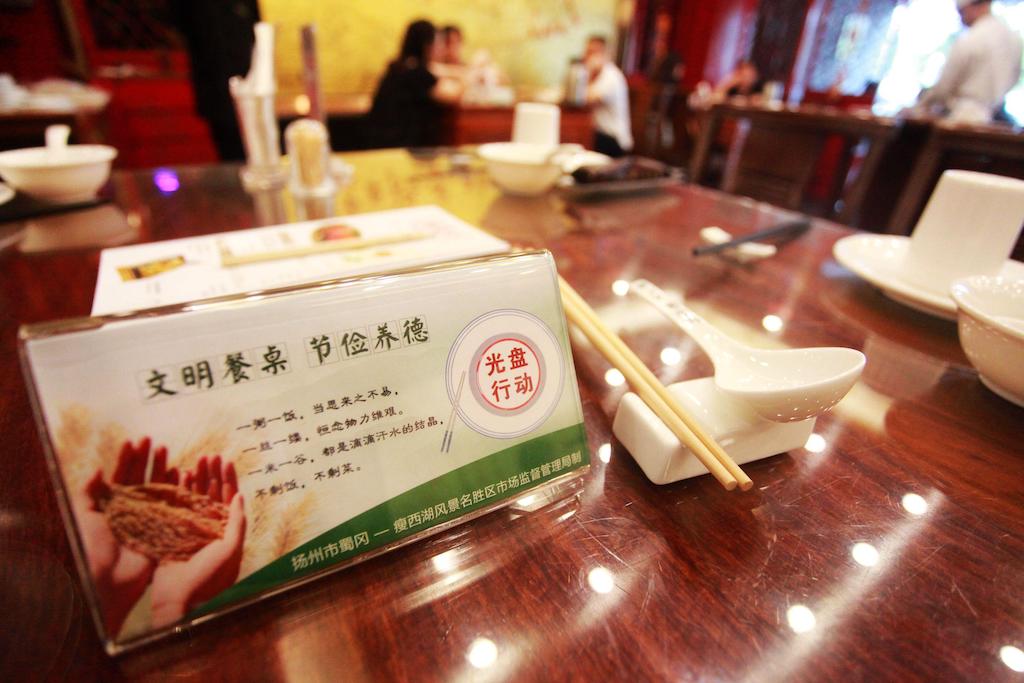
Also that year, the National People’s Congress (China’s national legislature) passed the Anti-Food Waste Law, which set out a set of rules for public entities and private food and catering service providers to improve food sourcing, management and preparation.
Food providers who mislead consumers into making “excessive orders” face fines up to RMB10,000 ($1,500). The law also bans making and distributing “binge-eating videos”.
In response, local governments and catering industries also came up with different policies to limit the amount of food ordered.
For example, the Wuhan Catering Industry Association asked the city’s restaurants to comply with a “N-1” model, which limits a group of diners to order one dish fewer than the number of the diners.
In other cities, such as Shanghai, some buffet restaurants charge customers a “clean plate” deposit which will be returned if no food is wasted at the end of the meal.
Some restaurants have proposed more extreme policies – such as determining how much customers can eat by measuring their weight before dining, drawing criticism.
Chewing the fat
The Chinese government has recognised the links between agriculture and climate change in multiple domestic policies and international commitments.
China’s “No.1 Central Document” (so-called because it is the first policy document released by China’s state council each year) for 2014 was the first to propose a plan for sustainable agriculture. This document focused on water use, pesticides and fertiliser use rather than climate change.
(The No.1 Central Document for 2022 focuses in particular on grain security, calling for new measures to ensure that grain production does not fall below 650bn kilos.)
In 2015, China referenced food production in its national climate pledge (otherwise known as a “nationally determined contribution”) submitted under the Paris Agreement.
In this, China pledged to promote “low-carbon development” in agriculture, to make efforts to achieve “zero growth” of fertilisers by 2020 and to control methane emissions from rice fields.
(In an updated version of its NDC released in 2021, China added that it would reduce fertiliser use, “refine” treatment of manure from livestock and poultry and use “energy-saving and emission-reduction technology in agriculture and fishery”.)
In 2016, China’s agriculture and finance ministries jointly issued a “plan for establishing a green and ecologically oriented agricultural subsidy system”. This plan promotes funds for agriculture going towards “resource-saving and environmentally-friendly” practices.
In 2021, the government released an “Action Plan for CO2 Peaking Before 2030”, which called for actions to “curb luxury, waste and unnecessary consumption, put a resolute stop to wasteful behaviours and work tirelessly to reduce food waste in the catering industry”.
This was the first time that the Chinese government specifically referenced the connection between food systems and climate change in an official document.
In June 2022, the country’s agriculture and rural affairs ministries jointly issued an “implementation plan for emission reduction and carbon sequestration in agriculture and rural areas”. This plan identifies 10 major “action areas”, including:
- Methane reduction in rice fields
- Fertiliser reduction and efficiency enhancement
- Emissions reductions from livestock and poultry
- “Sink improvement” [boosted CO2 storage] in fisheries
- Energy conservation in agricultural machinery
- Sink improvement in farmland
- Comprehensive utilisation of straw
- Renewable energy replacement
- Science and technology innovation support
- Implementation of farming monitoring systems
Later in 2022, China also announced it is drafting a national plan to control methane emissions.
Despite these measures, it is worth noting that China still lacks a comprehensive policy framework for reducing emissions from its entire food system.
This guest post has been adapted from a chapter on food systems in the Oxford Institute for Energy Studies’ Guide to Chinese Climate Policy 2022.


